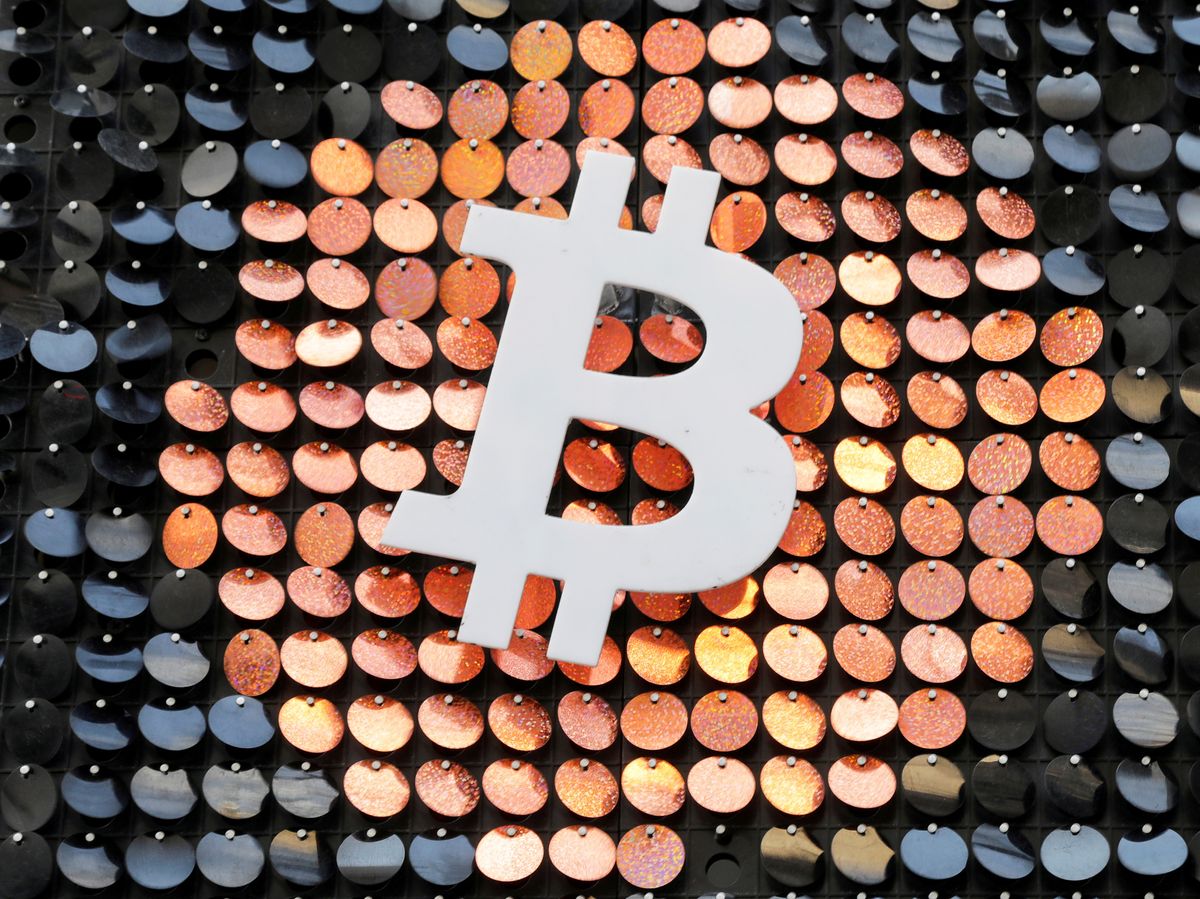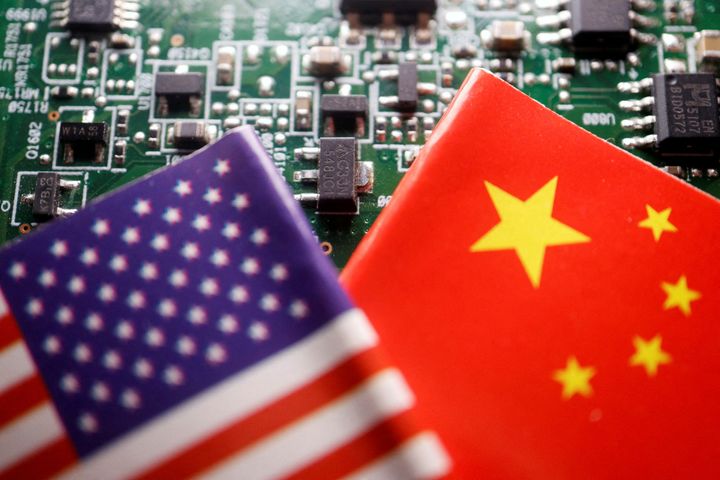Everything you need to know about cryptocurrency

A few minutes every morning is all you need.
Stay up to date on the world's Headlines and Human Stories. It's fun, it's factual, it's fluff-free.
For those seeking to understand digital currency, it’s important to first recognize how this technology works.
Over the past few years, cryptocurrency has seen tremendous growth, but it is far from a new concept. In fact, blueprints for an anonymous e-cash stream date back to as early as 1982.
Still, many are uncertain as to the safety of such a form of anonymous digital currency. For those seeking to understand, it’s important to first recognize how this technology works.
What is cryptocurrency?
Cryptocurrency is a form of digital currency that can be exchanged virtually using a technology called Blockchain, a decentralized system shared across many devices that maintains and preserves data.
By being able to share across multiple devices, Blockchain successfully rids itself of the need to have one centralized figure or entity in control.
This means that the data entered into Blockchain is, at its core, irreversible and consistently viewable to all devices. These “chunks,” or blocks of data, are strung together alongside a timestamp, leaving a lasting impression within the database.
It helps to consider this as, for instance, a company owning a program that is shared over multiple devices within an office building. One would need to access all of the devices to completely remove the program.
While similar, Blockchain differs in that it is stored over a series of devices belonging to different users in separate geographic locations, allowing it to remain safe from one singular centralized authority.
“Just like filesharing (LimeWire, Napster), there is no central authority that can be shut down,” Alex Postlmayr, the chief executive officer of Coinpay, tells TMS.
Still, it’s important to note that private, centralized Blockchains – whereby the computers that are used to store the information are all owned by one central authority – do exist. However, many of the current cryptocurrencies (including Bitcoin) do not operate in this way.
By functioning as a disconnected “unit,” each computer is able to piggyback on other devices to correct itself should an error appear in its data. For this reason, it is quite difficult to hack because all devices are able to pinpoint the precise computer among them that displays an error.
Each user must “not only make sure they have the latest copy, but the most agreed [upon] copy, this means that it’s the most trustworthy,” says Postlmayr.
“On top of that, there is always a most agreed [upon] standard of how to add on to that copy legitimately … This standard deals with a lot of statistics and other math, but the concept stays the same. It’s just a standard protocol to make sure you have a legitimate copy of the “book,” which is constantly updating, which cannot be shut down, and is as authentic as [a] piece of digital artwork or PDF.”
In short, to edit the history of transactions, one would need 51% of the network’s computing power to agree to the requested changes, leaving control with the majority as opposed to a third party figure.
In any case, this is not to say that hackers do not exist. Historically, there have been instances of people hacking into a Blockchain server and obtaining units of currency. However, although the currency is completely anonymous, the extracted units are easily traceable and can be accurately located the moment they are spent. This transparency allows auditors to review and track these cryptocurrencies.
Likewise, if a hacker attempted to go back and alter a block of data, their copy would no longer align with the other copies and would promptly be discarded as illegitimate. The effectiveness of such a hack would require the hacker to tailor all of the timestamps and codes in more than half of the copies.
This would require an immense amount of capital and energy, as many cryptocurrencies, such as Bitcoin, are growing more swiftly than could be altered. Similarly, it would cause the attacked version to plummet in value, rendering it useless.
Why was cryptocurrency created?
Cryptocurrency was first detailed in 1991 by Stuart Haber and W. Scott Stornetta. The researchers aimed to create a system in which document timestamps are incapable of being modified.
However, it wasn’t until January 2009 that the technology re-materialized in Satoshi Nakamoto’s research paper, introducing Bitcoin. Nakamoto referred to it as “a new electronic cash system that’s fully peer-to-peer, with no trusted third party.”
Now, according to CoinMarketCap.com, a market research website, there are more than 6,700 different publicly-traded cryptocurrencies. They estimated that the current value of cryptocurrencies – as of February 18, 2021 — was more than US$1.6 trillion.
Still, despite Blockchain’s use in cryptocurrencies, some analysts suggest that the technology could be used to record many other data points, proposing its use in tracking election ballots which would hypothetically eliminate fraudulent voting.
Others hint this could find its way into traditional banking, killing the waiting period for the bank to approve a transaction. Similarly, it would offer those without state-identification the ability to store wealth in a safe and secure way.
While this may seem like a small portion of the population, the World Bank says that there are nearly two billion adults who do not have bank accounts or means of safely storing their wealth.
Forbes suggests that even the food industry is adopting the use of blockchain technology to track the path and safety of food throughout the farm-to-table process.
However, while there are countless upsides to Blockchain technology, it is certainly not without its faults.
What’s the downside?
To begin with, integrating this technology into current systems is expensive, requiring immense computational power. Ars Technica suggests that Bitcoin’s network alone consumes as much energy as the entire country of Denmark.
Other critics point to the currency’s anonymity as a potential issue. While it preserves privacy for users, it also leaves room for illegal or unethical activity. Such analysts point to the “Silk Road,” an illegal online marketplace that was ultimately shut down by the Federal Bureau of Investigation (FBI) in the United States.
What’s more, Bitcoin’s system takes about 10 minutes to add a new “block” to the chain. At that rate, analysts estimate that it can only manage about seven transactions per second. Experts have been working on a solution to this for many years, pointing to other Blockchains that successfully perform over 30,000 transactions per second.
The reason for this is that many cryptocurrencies, such as Bitcoin, require a process called “mining” by which users verify and audit the legitimacy of transactions. This is the only way to release new cryptocurrency into circulation and is, in other words, the “minting” process for the digital currency.
For instance, as of November 2020, there were around 18.5 million bitcoins in circulation. All but the original block, created by the founder, were brought about by miners.
Further, Nakamoto stipulated that the number of bitcoins would be capped at 21 million. However, because the rate “mined” reduces over time, the final bitcoin won’t be circulated until the year 2140. In any case, miners are rewarded for their work with Bitcoin.
This influences the currency’s value in the market. As it is not issued by a bank or backed by a government, monetary policy, inflation rates and economic growth don’t apply to Bitcoin.
What does apply, however, is the supply and demand of bitcoin, the cost of producing a bitcoin through mining, the rewards issued to miners, the number of competing cryptocurrencies, the exchanges it trades on and its internal governance.
So, what can be expected for the future of Bitcoin and other cryptocurrencies?
Future of cryptocurrency
Many have communicated concerns over the potential for governmental regulation. While it is becoming increasingly difficult to end something such as Bitcoin, a government could, in theory, outlaw the use of the currency. Yet, this is growing less likely as large companies like PayPal begin to allow the use of these forms of currency on their platforms.
Other critics suggest that it is simply not a good investment, pointing to “the greater fool” theory of investment. This states that, in order for you to profit off of the currency, someone else must be willing to pay more for it than you did.
Warren Buffett compared this to checks, stating, “It’s a very effective way of transmitting money and you can do it anonymously and all that. A check is a way of transmitting money too. Are checks worth a whole lot of money? Just because they can transmit money?"
At any rate, Postlmayr maintains that “micropayments will pave the road of the future, literally.”
“In the future,” he says, “your self driving car might make a payment to another car in order for it to speed up or pass it. This is all enabled because there exists a secure network that you can hook your wallet up to, while being able to cryptographically trust that some hacker will not be able to come along and take all your money!”
This, indeed, makes for an interesting glimpse into the future.
Have a tip or story? Get in touch with our reporters at tips@themilsource.com




Comments ()